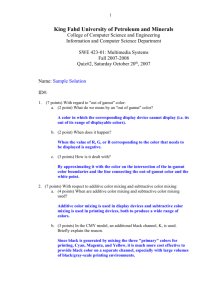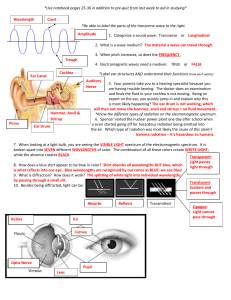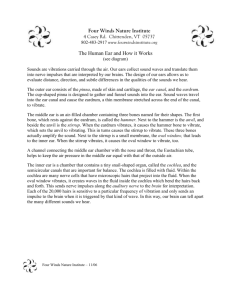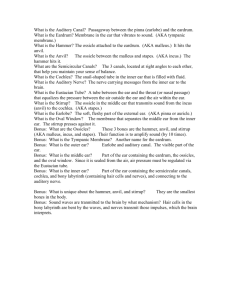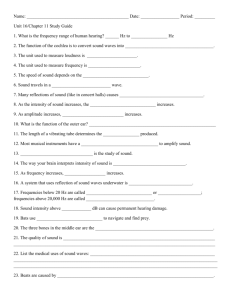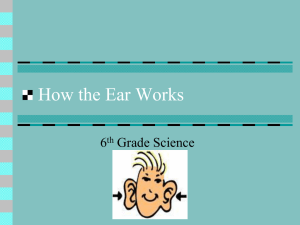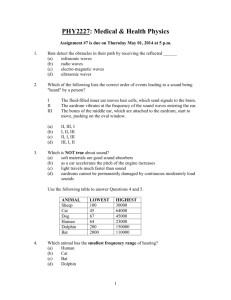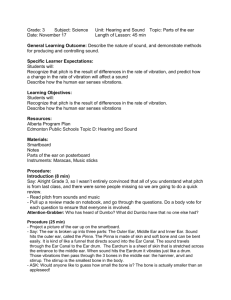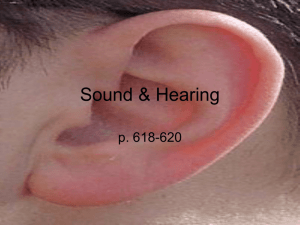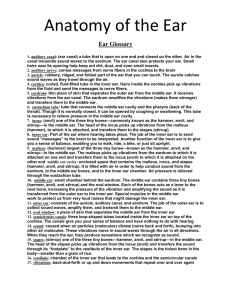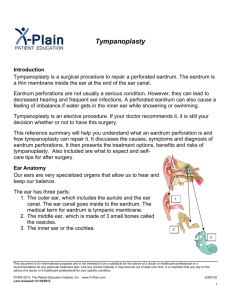DOC - KFUPM Open Courseware - King Fahd University of
advertisement
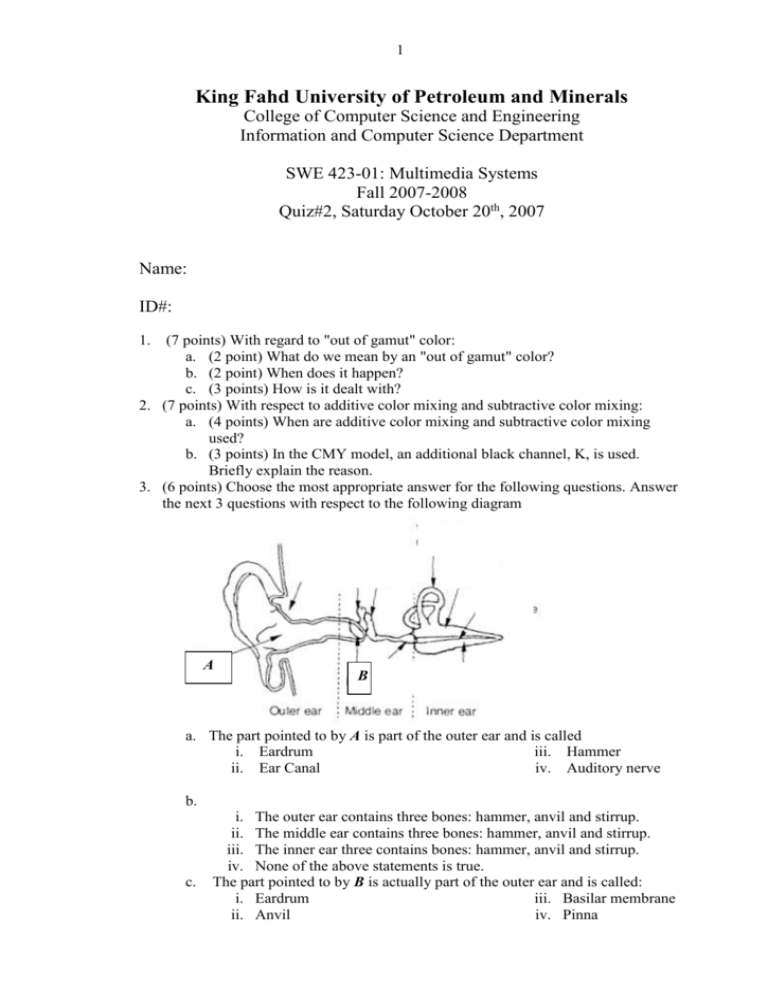
1 King Fahd University of Petroleum and Minerals College of Computer Science and Engineering Information and Computer Science Department SWE 423-01: Multimedia Systems Fall 2007-2008 Quiz#2, Saturday October 20th, 2007 Name: ID#: 1. (7 points) With regard to "out of gamut" color: a. (2 point) What do we mean by an "out of gamut" color? b. (2 point) When does it happen? c. (3 points) How is it dealt with? 2. (7 points) With respect to additive color mixing and subtractive color mixing: a. (4 points) When are additive color mixing and subtractive color mixing used? b. (3 points) In the CMY model, an additional black channel, K, is used. Briefly explain the reason. 3. (6 points) Choose the most appropriate answer for the following questions. Answer the next 3 questions with respect to the following diagram A B a. The part pointed to by A is part of the outer ear and is called i. Eardrum iii. Hammer ii. Ear Canal iv. Auditory nerve b. c. i. The outer ear contains three bones: hammer, anvil and stirrup. ii. The middle ear contains three bones: hammer, anvil and stirrup. iii. The inner ear three contains bones: hammer, anvil and stirrup. iv. None of the above statements is true. The part pointed to by B is actually part of the outer ear and is called: i. Eardrum iii. Basilar membrane ii. Anvil iv. Pinna 2 d. The following component, which is part of the outer ear, converts the acoustic energy (sound) into mechanical energy (vibrations): i. Eardrum iii. Basilar membrane ii. Anvil iv. Pinna e. The following component, which is part of the inner ear, detects the amplitude and frequency of sound: i. Eardrum iii. Basilar membrane ii. Anvil iv. Pinna f. High compression ratios for efficient storage of audio signals can be achieved because i. The ear is highly sensitive to small defects in desirable signals ii. The ear ignores large defects in signals it assumes are irrelevant iii. Both i and ii iv. None of the above

